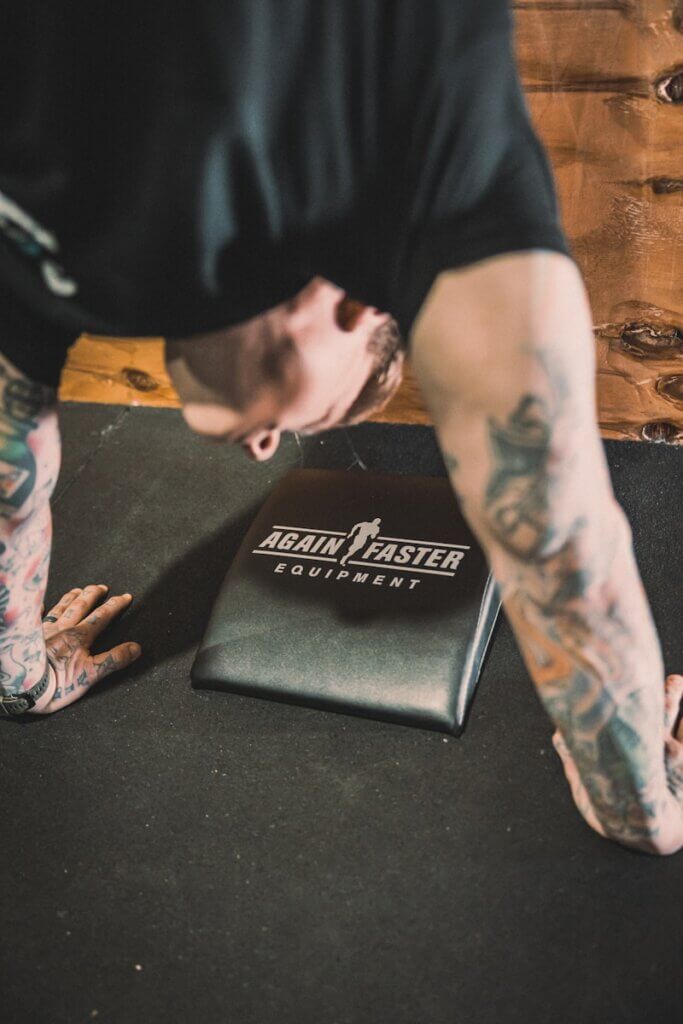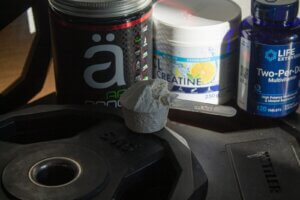How to Wall Walk

Introduction:
Wall walks are a challenging yet rewarding exercise that strengthens the upper body, core, and stabilizer muscles while improving shoulder mobility and stability. Originating from gymnastics and popularized in CrossFit, wall walks require minimal equipment but offer maximal benefits for overall fitness and athleticism. In this guide, we’ll explore the mechanics of the wall walk, provide step-by-step instructions, essential equipment, scaling options, common mistakes to avoid, and the diverse benefits of incorporating this dynamic movement into your training regimen.
Steps in the Wall Walk movement
- Starting Position: Begin in a push-up position facing away from the wall, with hands shoulder-width apart and feet hip-width apart.
- Walk Feet Up: Slowly walk your feet towards the wall while simultaneously walking your hands towards the wall, maintaining a strong plank position.
- Walk Hands Up: Continue walking your hands up the wall until your body is nearly vertical, with arms fully extended and hands shoulder-width apart.
- Hold Position: Pause briefly at the top of the wall walk, engaging your core and stabilizing your shoulders.
- Reverse Movement: Reverse the movement by walking your hands away from the wall and walking your feet down to return to the starting push-up position.
What Equipment is needed
- Wall: A smooth, flat surface free of obstacles or obstructions.
- Exercise Mat: Optional, but can provide cushioning and comfort for your hands and wrists.
- Wrist Wraps
- Chalk, so not to slip with your hands.
While wall walks require minimal equipment, having the right gear can enhance performance and safety. A sturdy, smooth wall free from obstructions is essential. An exercise mat provides cushioning for your hands and protects your wrists from hard surfaces. Wrist wraps can offer additional support, especially for individuals with a history of wrist discomfort. Chalk can improve grip and reduce hand slippage due to sweat. Investing in quality athletic apparel that allows a full range of motion will also contribute to a more comfortable experience. While not mandatory, these items can make your wall walk practice safer and more effective.
Check out the Equipment subsite for more tools, tips, and inspiration.

Shop Fitness gear now on Amazon
See Amazons extensive range of workout gear here. (Affiliate Link)
Scaling Options:
To gradually build strength and proficiency, consider the following scaling options:
- Incline Wall Walks: Perform wall walks with your hands elevated on a box or bench to reduce the angle and difficulty.
- Partner Assisted Wall Walks: Have a partner provide support and guidance as you perform the movement, assisting with balance and stability.
Common Mistakes to Avoid:
- Arching Lower Back: Maintain a strong core and avoid overarching the lower back to prevent strain and injury.
- Sagging Hips: Keep the hips lifted and in line with the shoulders to maintain a stable plank position throughout the movement.
- Limited Shoulder Mobility: Focus on gradual progression and flexibility exercises to improve shoulder mobility and range of motion.
Benefits of the Movement:
- Upper Body Strength: Targets the muscles of the shoulders, chest, arms, and back, building strength and endurance in the upper body.
- Core Stability: Engages the core muscles, including the abdominals, obliques, and lower back, to stabilize the body during the movement.
- Shoulder Mobility: Improves shoulder flexibility and mobility, enhancing overall joint health and function.
- Functional Fitness: Mimics real-world movements like climbing and pushing, making it a valuable skill for functional fitness and everyday activities.

Which Muscles Are Worked:
During this exercise, the following muscle groups are engaged:
- Primary Muscles: Deltoids, pectoralis major, triceps, latissimus dorsi, core muscles.
- Secondary Muscles: Rhomboids, serratus anterior, erector spinae, quadriceps.
Alternative Similar Movements:
If you’re seeking variation or targeting specific muscle groups, consider incorporating these alternative exercises:
- Handstand Push-Ups
- Pike Push-Ups
- Shoulder Taps

Shop Fitness gear now on Amazon
See Amazons extensive range of workout gear here. (Affiliate Link)
Progressions and Skill Development
Mastering the wall walk requires a combination of strength, balance, and coordination. To build these skills progressively, start with foundational exercises that prepare your body for the demands of the movement. Begin with incline wall walks, where your hands are elevated on a box or bench, reducing the angle and intensity. This modification allows you to develop shoulder strength and core stability gradually. As you become more comfortable, transition to partial wall walks, moving halfway up the wall before returning to the starting position. Incorporate shoulder mobility drills and core strengthening exercises, such as plank variations and hollow holds, to further enhance your capabilities. Consistent practice and patience are key; listen to your body and progress at a pace that ensures safety and confidence in each movement phase.
Safety Precautions and Injury Prevention
Safety is paramount when performing wall walks, given the inverted position and strain on the shoulders and wrists. Before beginning, ensure the wall and floor area are clear of obstacles and debris to prevent slips or falls. Using an exercise mat can provide additional cushioning for your hands and reduce wrist strain. It’s crucial to engage in a thorough warm-up, focusing on shoulder mobility and core activation, to prepare your muscles and joints for the movement. Pay attention to your body’s signals; if you experience discomfort or pain, stop immediately and assess your form. Regularly incorporating stretching and strengthening routines for the shoulders, wrists, and core can aid in injury prevention and improve overall performance in wall walks.
Integrating Wall Walks into Your Workout Routine
Incorporating wall walks into your regular fitness regimen can enhance upper body strength, core stability, and overall functional fitness. Begin by adding wall walks to your warm-up to activate the shoulders and core muscles. As you progress, include them in your main workout, either as part of a circuit or a standalone exercise. For instance, combine wall walks with push-ups, squats, and burpees for a full-body workout that challenges multiple muscle groups. Adjust the number of repetitions and sets based on your fitness level, starting with a manageable number and gradually increasing as your strength and endurance improve. Remember to balance wall walks with complementary exercises that promote muscle recovery and prevent overuse injuries.

Shop Fitness gear now on Amazon
See Amazons extensive range of workout gear here. (Affiliate Link)
Addressing Common Challenges
Many individuals encounter challenges when learning wall walks, such as fear of inversion, limited shoulder mobility, or insufficient core strength. To overcome the fear of being upside down, practice partial inversions and gradually increase the degree as your comfort level improves. Enhancing shoulder mobility through regular stretching and incorporating shoulder-strengthening exercises can alleviate stiffness and improve range of motion. Building core strength with targeted exercises like planks and hollow holds will provide the stability needed for wall walks.
Q&A on Wall Walks
What are the standards for wall walks CrossFit?
The standard for wall walks in CrossFit includes starting with your chest and thighs on the ground, walking your feet up the wall while moving your hands closer to the wall until you reach the required height or position, then reversing the movement back to the starting position.
How do I get stronger for wall walks?
To build strength for wall walks, focus on exercises that enhance upper body and core strength, such as push-ups, planks, and handstand holds. Gradual progression and consistent practice are key.
What is the alternative to wall walks in CrossFit?
Alternatives to wall walks include pike push-ups, incline push-ups, and handstand holds. These exercises help build the necessary strength and stability for wall walks.
What muscles do CrossFit wall walks work?
Wall walks work the deltoids, pectoralis major, triceps, latissimus dorsi, core muscles, rhomboids, serratus anterior, erector spinae, and quadriceps.
What is the number 1 rule of CrossFit?
The number one rule of CrossFit is to maintain proper form and technique to prevent injury and maximize the effectiveness of each exercise.
How to wall walk for beginners?
Beginners can start with incline wall walks or partial wall walks to build strength and confidence. Gradually increase the difficulty as you become more comfortable with the movement.
What is the scaling option for wall walks?
Scaling options for wall walks include performing incline wall walks or having a partner assist you. These variations help reduce the difficulty while still building strength and technique.
Are wall walks effective?
Yes, wall walks are effective for building upper body strength, core stability, and shoulder mobility. They also improve overall body control and functional fitness.
What is the hardest CrossFit exercise?
The hardest CrossFit exercise varies by individual, but some of the most challenging include the muscle-up, handstand push-up, and the snatch. These exercises require a combination of strength, skill, and technique.
How to warm up for wall walks?
Warm up for wall walks with dynamic stretches and movements that activate the shoulders, core, and wrists. Examples include arm circles, shoulder taps, and plank variations.
What type of body does CrossFit build?
CrossFit builds a functional and athletic physique, characterized by muscular strength, endurance, and agility. It promotes a well-rounded fitness level and enhances overall athletic performance.
How to improve on wall walks?
To improve on wall walks, practice consistently and focus on building upper body and core strength. Incorporate shoulder mobility exercises and progress gradually.
What is the standard for wall walks?
The standard for wall walks includes starting in a prone position, walking the feet and hands towards the wall, pausing at the top, and then reversing the movement back to the starting position.
Is wall walk hard?
Yes, wall walks can be challenging due to the strength, balance, and coordination required. However, with practice and proper scaling, you can build up to performing them with confidence.
What can I do instead of wall walks?
Instead of wall walks, you can perform pike push-ups, incline push-ups, or handstand holds to build similar strength and stability.
What muscles wall walks?
Wall walks primarily target the deltoids, pectoralis major, triceps, latissimus dorsi, core muscles, rhomboids, serratus anterior, erector spinae, and quadriceps.
What is a box wall walk?
A box wall walk involves using a box to elevate your feet while performing the wall walk movement. This scaling option reduces the difficulty and helps build strength and technique.
Conclusion:
Incorporating wall walks into your training routine can challenge your strength, stability, and mobility, leading to improved overall fitness and performance. With consistent practice and proper technique, you’ll soon conquer this dynamic exercise, unlocking new levels of strength and athleticism. So, step up to the wall, embrace the challenge, and let’s walk our way to greater fitness together!

Shop Fitness gear now on Amazon
See Amazons extensive range of workout gear here. (Affiliate Link)





